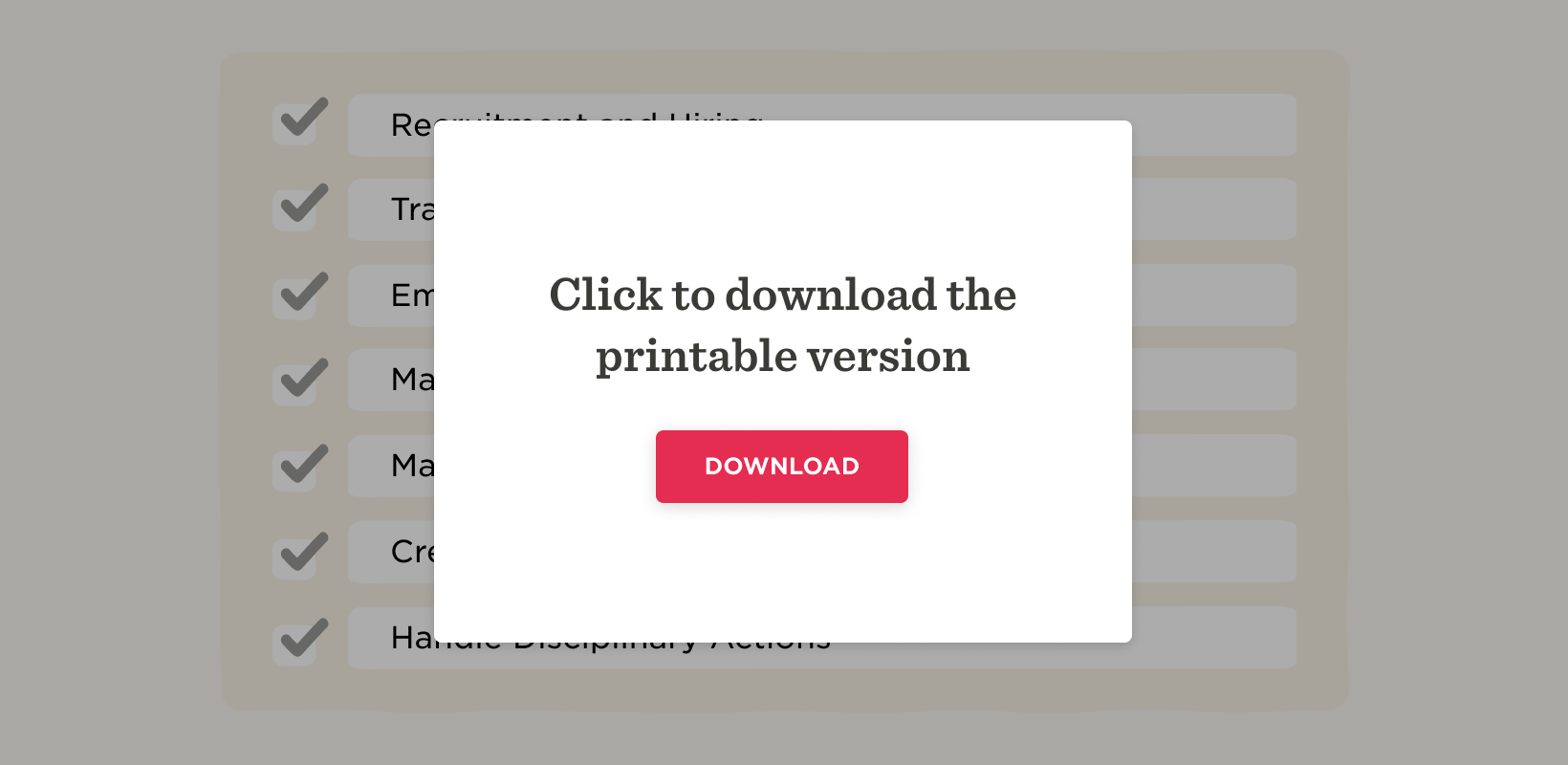In an agile business environment, HR leaders and senior management are becoming ever more resourceful when planning flexible strategies for attracting, retaining, and developing the best talent.
At the heart of these approaches lie human capital management strategies. These days, HR’s responsibilities have expanded significantly. Whereas in the past, HR teams might have focused on employee issues, pension plans, and timesheets, these days, they cover so much more. From work culture and benefits to performance management and learning and development programs, HR leaders and managers are now responsible for the success of their people.
Although times have changed, with modern leaders preferring to focus on a positive work culture, an open and supportive environment, and flexible approaches to work, human capital strategies remain an important part of planning for the future.
But how exactly have these strategies evolved? What are they, and why might you need them? Let’s take a detailed look at everything you need to know to build your own strategic human capital management plan that’s fit for the modern age.

What is human capital?
The HR world moves fast, and the term “human capital” already feels a little outdated. In the traditional sense, human capital refers to your workforce—the people who power your organization and carry out the day-to-day running of your business. It also refers to the combined balance of their skills, experience, and knowledge and how you can utilize these assets to create value for your business and its customers.
Human capital is your company’s most valuable asset. Without your people solving problems, performing their jobs, and serving your clients, you would simply cease to exist.
So, it’s hugely important that you take care of your human capital and find ways to help your people develop their skills and feel fulfilled, happy, and satisfied at work. This will increase their loyalty to your organization and help you retain the brightest and best in a competitive recruiting environment.
What is strategic human capital management?
Strategic human capital management (HCM) refers to your overall approach to looking after your people. It refers to how you invest in your people’s development and skills to increase engagement and achieve your business goals.
It’s a people-focused approach that combines recruitment, onboarding, payroll, benefits, and performance management into one strategy, helping you drive a more efficient and effective HR process.
If it’s done right, you are treating your people as, well, people. Strategic human capital management considers every part of their relationship with your business, finding every opportunity to improve their learning and support your success. It acknowledges your people’s critical role within the organization, encouraging your company to provide valuable training and development opportunities in exchange for their contribution to human capital.
As part of a modern HR function, HCM is an essential way to create a positive and supportive work environment for your people, supporting your recruitment and retention efforts. HCM strategies have become crucial in recent years as businesses and HR leaders seek to remain agile in their structures, processes, and approaches.
An effective strategic human capital management approach focuses on your teams’ skill sets alongside the company’s needs. It helps everyone grow and learn, makes individuals feel comfortable, engaged, and empowered, and aligns your resources with the broader goals of your business.
The differences between HCM and HR
At a fundamental level, HCM and HR describe the same aspect of your business: managing your people. Traditionally, HR referred to the more practical aspects of team management, such as employee issues and basic training budgets, whereas HCM perhaps captured a wider strategic workforce planning approach.
As HR processes have evolved, however, and HR leaders have taken on more significant roles in strategic business planning, the meanings of these terms have become more similar. Today, when we refer to next-generation HCM powered by a modern human resource information system (HRIS), we’re also referencing the function of the HR team as a whole.
Recommended for further reading:
- Why CHROs make excellent CEO candidates
- How to be a great HR leader in the new world of work
- Human capital management software
- HCM integration checklist
- Navigating the workforce planning process
Why you need strategic HCM
In today’s changeable world, HR leaders must also be agile. By preparing a range of strategies and upskilling your people, you can lay the groundwork for future success. That means keeping your teams engaged and connected and listening to their needs in an openly communicative culture.
But to build an effective strategy, you need accurate and up-to-date information on the status of your teams and their skill sets and experiences. You also need to provide relevant training and development programs—as well as make the right hires—to be sure that your teams have the right people and tools to serve the needs of your business.
Strategic HCM is a tried and tested way of shaping an effective approach that captures all of these considerations.
Components of human capital management strategies
Human capital management strategies can encompass a wide range of elements right across your business. These include:
- Payroll, benefit plans (from healthcare to leave policies and social security), and other compensation schemes.
- Recruitment and onboarding processes.
- Workforce planning.
- Career development opportunities, such as promotions and lateral moves.
- Mentoring programs.
- Performance management.
- Training and development throughout your organization.
- Wellness policies and culture-building efforts.
An effective HCM plan includes every element of your HR operation. In a large organization, this will involve bringing together a vast amount of information and knowledge to effectively build your strategy. So it’s no surprise that HR leaders all over the world are turning to HR tech to help out.

Implementing HCM strategies with HR tech
Modern software is an essential part of next-generation human capital management, even for small and medium-sized organizations. There’s simply too much information and too many parts of your HR function to operate them manually. For example, you will need to bring together:
- Recruitment strategies
- Onboarding processes
- Training plans
- Strategic workforce planning
- Compensation planning
- Time, attendance, and performance management
- Payroll
- Offboarding
- Workflow management
- Reporting and analytics
- Regulatory compliance
- Self-service functions for your people
In recent years, this final area of HCM has become even more pronounced. In fact, today’s tools are primarily focused on employee engagement and experience, with back-office HR functions becoming a secondary benefit of the software. These platforms are built on flexibility and customization, allowing you and your teams to adapt and adjust as and when needed, without the need for a complicated, time-consuming, and expensive process.
By capturing the full spectrum of your business intelligence in a human resource information system (HRIS), you can take advantage of powerful tools that help you navigate the complicated process of recruiting, onboarding, managing, and offboarding your people. These tools allow you to identify the precise impact of your everyday operations on the bigger picture, enabling you to align your work with the wider strategic objectives of the company.
There are a few key things to look out for in an HR platform built to cope with modern HCM:
- Organizational agility features that support “liquid teams” and the regular restructuring of workforces that boast a complex mix of full-time employees, contingent workers, contractors, and remote workers, across different parts of the world.
- Employee experience tools that incorporate features for feedback, goal setting, easy communication with colleagues, and culture building.
- AI enablement that pulls out powerful insights to drive your workforce planning, learning and development programs, and skills matching.
- Scalability that can easily adjust to agile teams who might be experiencing periods of sudden growth or change.
Recommended For Further Reading
Today, it’s people first
“Human capital” might be a somewhat outdated way of describing the people that power a business, but planning a strategy that focuses on their experience and development within the company remains a crucial consideration for modern HR leaders.As recruitment remains highly competitive, attracting, retaining, and developing the best talent out there is not only a way of gaining a competitive advantage, but is also an essential move if you are to keep pace in the marketplace. With professionals able to demand more and more from their employers in terms of training, flexible working, and progression opportunities, streamlining and optimizing your HR function with next-generation human capital management is the best way to attract and retain talent.
Meet Bob
At HiBob, we’ve built a modern HR platform designed for modern business needs—today and beyond.
An HR platform such as Bob offers a one-stop shop for all things HR. It sits at the center of your HR ecosystem, is fully customizable, and grows with your organization.
For HR, it delivers automation of many common processes, allows greater oversight and visibility of the business, and centralizes all people data in a secure, user-friendly environment.
For managers, it provides access to data and insights to help them lead more effectively and streamline processes.
For employees, it’s the tools and information they need to connect, develop, and grow throughout their journey.
In a short time, Bob can be deployed to enable communication, collaboration, and connectivity that drives stronger engagement, productivity, and business outcomes.
